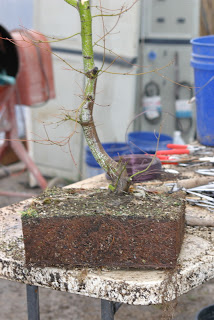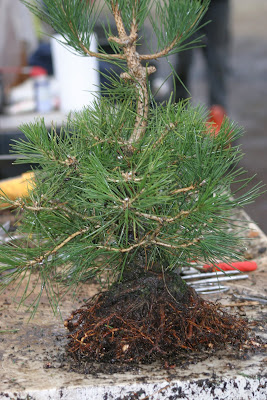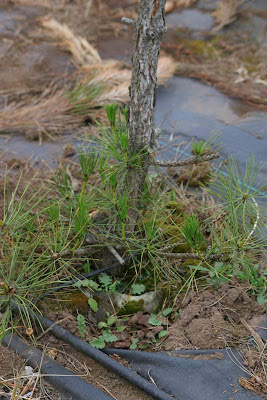Two years since major rootwork on a 3yr cutting. Anderson trays are really good for aeration which is essential for good root development.
 This year will start its journey toward bonsai with a summer pruning to establish new buds or shoots for the new leader and branches. For a larger tree there would be less emphasis on building new shoots now. JMs where large cuts have been made are not attractive to me so all branches are only allowed to grow for one or two years at most. The one scar will be where the new leader changes and it will be for direction and will have a branch opposite the leader so the cut will blend into line.
This year will start its journey toward bonsai with a summer pruning to establish new buds or shoots for the new leader and branches. For a larger tree there would be less emphasis on building new shoots now. JMs where large cuts have been made are not attractive to me so all branches are only allowed to grow for one or two years at most. The one scar will be where the new leader changes and it will be for direction and will have a branch opposite the leader so the cut will blend into line.










